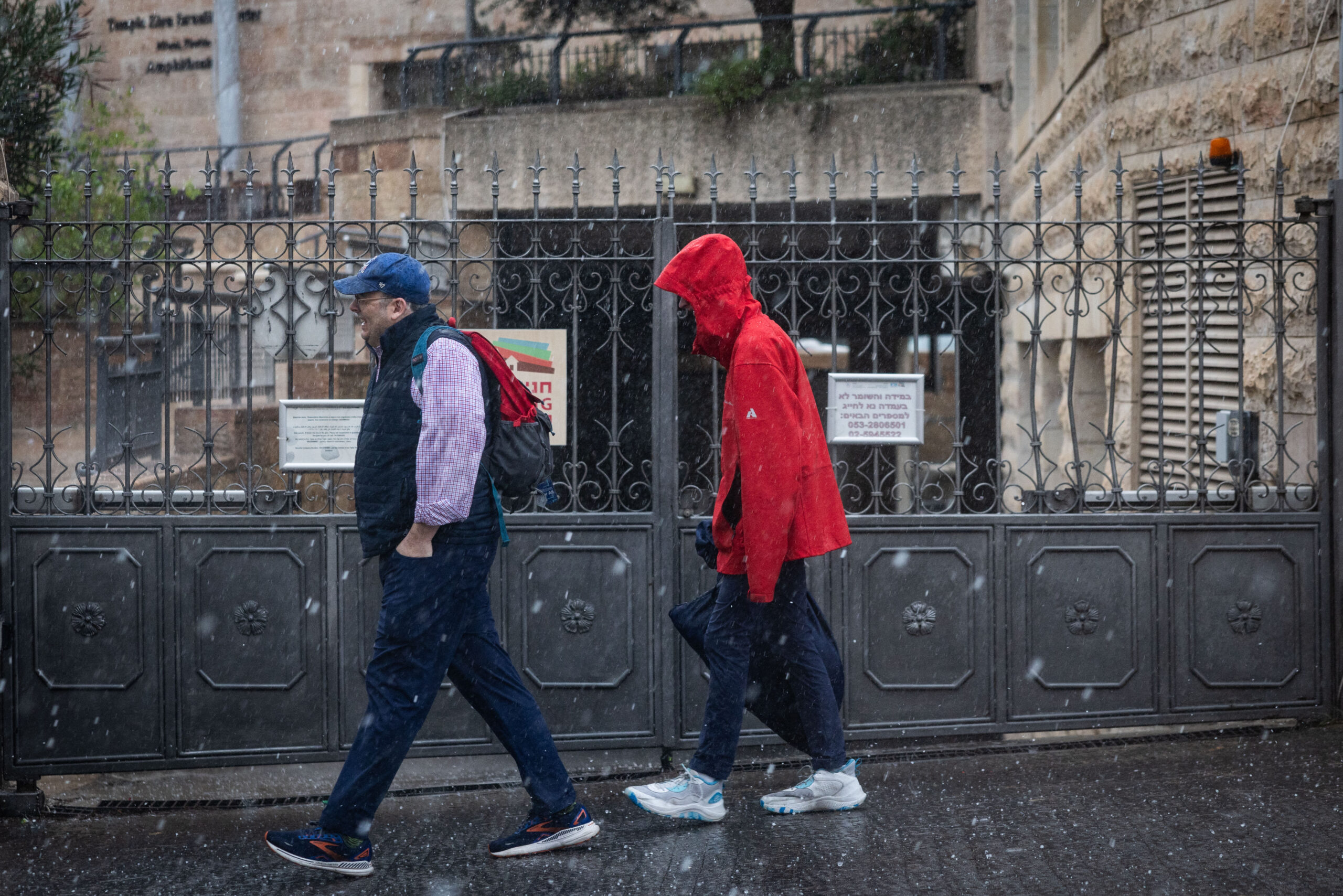Lightning flashed across Israel throughout the night, striking the ground tens of thousands of times as a powerful storm system swept from the Golan to the Negev. After months of dry heat and what officials have called the driest winter in a century, the skies finally opened. More than 1.9 inches of rain fell in Karnei Shomron, 1.85 inches in Mevo Dotan, and 1.30 inches in Haifa. Ariel received 1.54 inches, and Modi’in saw about 1.18 inches. The southern regions were hit as well, with roughly 1.38 inches at the Negev Junction and more than an inch in Beersheba. Hail, strong winds, and heavy runoff turned major roads into rivers.
Fire and Rescue teams worked through the night pulling stranded vehicles from floodwaters in Beersheba, Hura, the Judean Desert, and the northern Galilee. Magen David Adom crews responded to calls from Kiryat Gat to Tirat Carmel, helping drivers and residents trapped by sudden floods. Meteorologists warn that more storms are expected today, including in the Judean Desert and Dead Sea wadis, before tapering off toward evening.
This dramatic downpour arrived just after Israel began an unprecedented project: pumping desalinated Mediterranean seawater into the Kinneret, the first effort of its kind in the world. Engineers expect flows of up to 5,000 cubic meters per hour during the winter months. After years of intense drought, the Kinneret had dropped toward its lower red line, and this technological reversal became essential. Now, the storm is filling the streams that feed the lake at the same moment that man-made water is being sent back into it.
Israel depends on rain between November and March when about 70 percent of the average rain falls. Nearly the entire hydrological year hinges on those months. When the skies stay closed, as they did this year, the land feels it immediately. Farmers began worrying about damaged wheat and drying pastures. City planners prepared for rationing. This is reflected in the daily prayers in which the prayer for rain is inserted at the end of the autumnal holiday of Sukkoth and continues until the spring holiday of Passover. This has its roots in the agricultural basis of the religion, and unseasonal rain can damage crops. In synagogues across the country, the prayer for rain — mashiv ha’ruach u’morid ha-geshamim (“He causes the wind to blow and brings down the rain”) — took on a sharper tone.
In the Bible, rain in Israel is never merely weather. It is a covenant. “If then, you obey the commandments that I enjoin upon you this day, loving Hashem your God and serving Him with all your heart and soul, I will grant the rain for your land in season, the early rain and the late.” (Deuteronomy 11:13) Rain is the physical expression of God’s presence in the Land and His attention to His people. The Sages taught that the day rain falls is as great as the day Heaven and Earth were created, because it renews the world and reveals Divine judgment and mercy working together in nature.
Jewish tradition also connects rainfall directly to the geulah, the Final Redemption. Midrash Bereishit Rabbah teaches that at the end of days, God will unravel the covenant He made with the nations after the Flood, and the world will see destructive waters return. But for Israel, rain will appear not as chaos but as comfort. The same Midrash highlights that the covenant with Noah was “for the generations of the world,” hinting that its end marks the arrival of the Messiah.
Multiple teachings point in different directions. Some predict abundant rain before redemption. Thirteen years ago, when Israel faced severe drought, Rabbi Dov Kook said: “When the Messiah arrives, the Kinneret will be full.” According to that view, rainfall is not only a blessing but a signpost.
Other sources forecast the opposite. Isaiah wrote: “Grass withers, flowers fade when the breath of Hashem blows on them. Indeed, man is but grass.” (Isaiah 40:7) The Malbim explained that just as wheat must dry before harvest, the world will go through a parching season before redemption. According to this approach, the drought itself was the signal, and the sudden storm marked the moment when the cycle turns.
Kabbalistic teachings articulate this even more clearly. In Pri Chayim, the students of the Ari recorded that the word geshem (rain) is an acronym for ge’ulah shleimah meherah — “complete redemption, quickly.” In Jewish prayer, this link is embedded twice every day. In the second blessing of the Amidah, we praise God for resurrection and rain in the same breath because both revive what appears dead. The hills of Israel make that truth visible every winter as brown grass suddenly turns green after the first storm.
After a dry and anxious season, Israel has now been struck by a rare and forceful rain. Flash floods, lightning storms, and swollen rivers are tangible events, not symbols. Yet for those who live in the Land and know its language — the language of seasons, covenant, and promise — this rainfall carries significance far beyond its inches.




